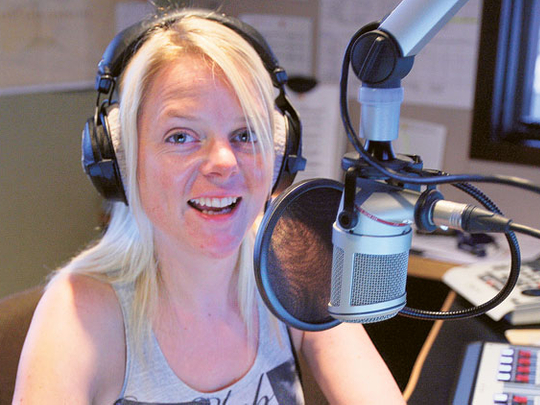
Dubai: Everybody, it seems, is going gaga over radio. Or at least tuning in enough numbers to make it a compelling platform for advertisers to reach out and connect with listeners.
According to data from the Pan Arab Research Centre (Parc), ad spend on radio nearly doubled during the first three months of the year compared with the tally for the same period last year.
That it comes amidst a still soft advertising market for print and television media makes radio's recent gains all the more starker. This obviously translates into the sweetest of music for local radio stations.
"Radio traditionally was seen by [ad] agencies as the ‘rounding off media', i.e., allotment to radio represented the leftover residual budgets of clients," said Vikram Dhar, head of radio at GN Broadcasting, which owns Radio 1 and Radio 2 and, more recently, acquired the marketing rights for 106.2 and UAQ 97.8.
"This has changed with the maturing of commercial radio."
That may be so, but the latest data indicate that radio is not about to go the way of the video cassette recorder. Comparative data shows that radio listeners are least likely to tune out when ad jingles start playing between songs or chat shows.
Parc's data suggests that 36 per cent of listeners take in the ads while they are aired.
Heavy discounts
Recent history also had a hand in local radio's strong gains. With ad rates on radio lower than for other media, advertisers took more serious note of the lower cost media options available to them and their clients. That was when they started tuning in seriously to radio's possibilities.
Another reason for the spike in the first-quarter ad numbers can be attributed to the recent cricket World Cup in the subcontinent and its rub-off on the listening public here… or at least a good chunk of it. Radio ads were specifically created to air during the entire run of the World Cup.
"As advertising spending took a nosedive during 2009 and started to recover cautiously only this year, low-cost vehicles were clearly in focus," said Shaharyar Umar of Parc.
"As per Target Group Index surveys, 47 per cent [of respondents] agreed that they always listen to radio when in a car and 24 per cent do so on mobile phones."
But there is the need to keep these in perspective. As against the overall advertising spend in the UAE, the share of radio is still a marginal 2 per cent or thereabouts.
"Since 2008 almost all stations have been forced to leave their rate cards unchanged," said Dhar. "Due to heavy discounting actual realisation means a further attrition in rates."
Vinu Vincent of Radio 4FM reckons the low rates have played to the local stations' advantage, albeit one of a short to medium term duration.
"The most important thing is that during the boom years rates did not jump as high as other media — radio is an effective media to reach a large number of people with a small budgets," Vincent said. "This allows us as an industry to stay competitive and effective."
But the low base on the advertising spend and the intensely competitive landscape on tariffs have not deterred the entry of new players hoping to capture. Suno 102.4, part of the Radio Asia network, was launched in January.
IP-based solutions
"We started working six months before that; it's not an easy job to start a radio station in any part of the world," said Gagan Mudgal, programming director at Suno 1024.
"Everyone expects profitability from day one, but I guess one year is enough to break even. In our case we will need a little more time because our investments have been more being a completely internet-based radio station."
But unlike a print publication or even a television station, there are still no viable measures to gauge the level of listener interest a radio station commands.
"The speed and quantum of change has been slow due to the absence of quantifiable and verifiable research and what is seen as the fragmentation of the market," said Dhar.
"Due to the fact that the industry is disorganised — no official body representing audio broadcasters — discounting and value bonuses to clients are on the increase. There are a host of discounts, commissions, bonus value additions, etc,. that make the effective rate a small percentage of the published price."
Being a low-cost vehicle for advertisers also means that the audience they go after are quite segmented.
Outlook
There are higher budgets out there for ad campaigns on radio, but are they enough to keep all the competing stations in fine fettle?
"I think there is enough advertising out there in the market; if one can give quality, sponsors come forward and spend on your product," said Gagan Mudgal of Suno 1024.
"But availability of ad revenue doesn't automatically guarantee turnover for all stations. Consolidation is inevitable."
Even as radio gets fresh attention from a growing base of listeners and advertisers, some of the old sureties are disappearing.
"The age of single language, one service broadcasters is over," said Vikram Dhar of GN Broadcasting.
"The future belongs to evolving network service providers who can offer multiple services with innovative marketing solutions for brands.
"Radio — or "audio streaming" as I prefer to call the industry — is set to mutate significantly over the next three years. With the inroads made by web and mobile technology, audio listening will increase significantly as users will be able to "listen in" using a host of devices. Technology will assist operators to offer better services to users."










